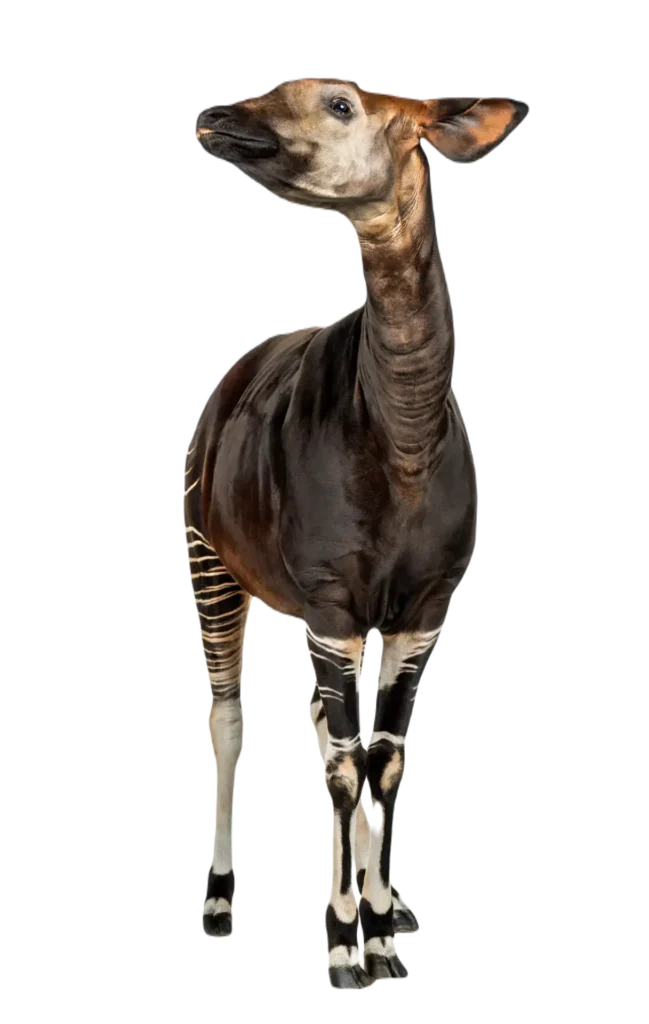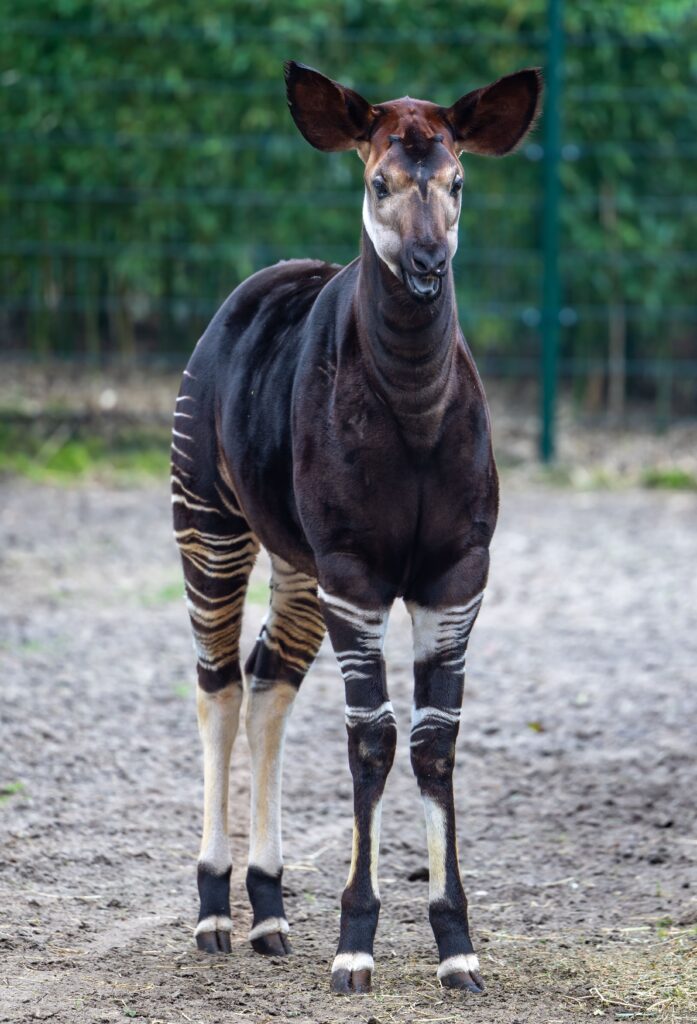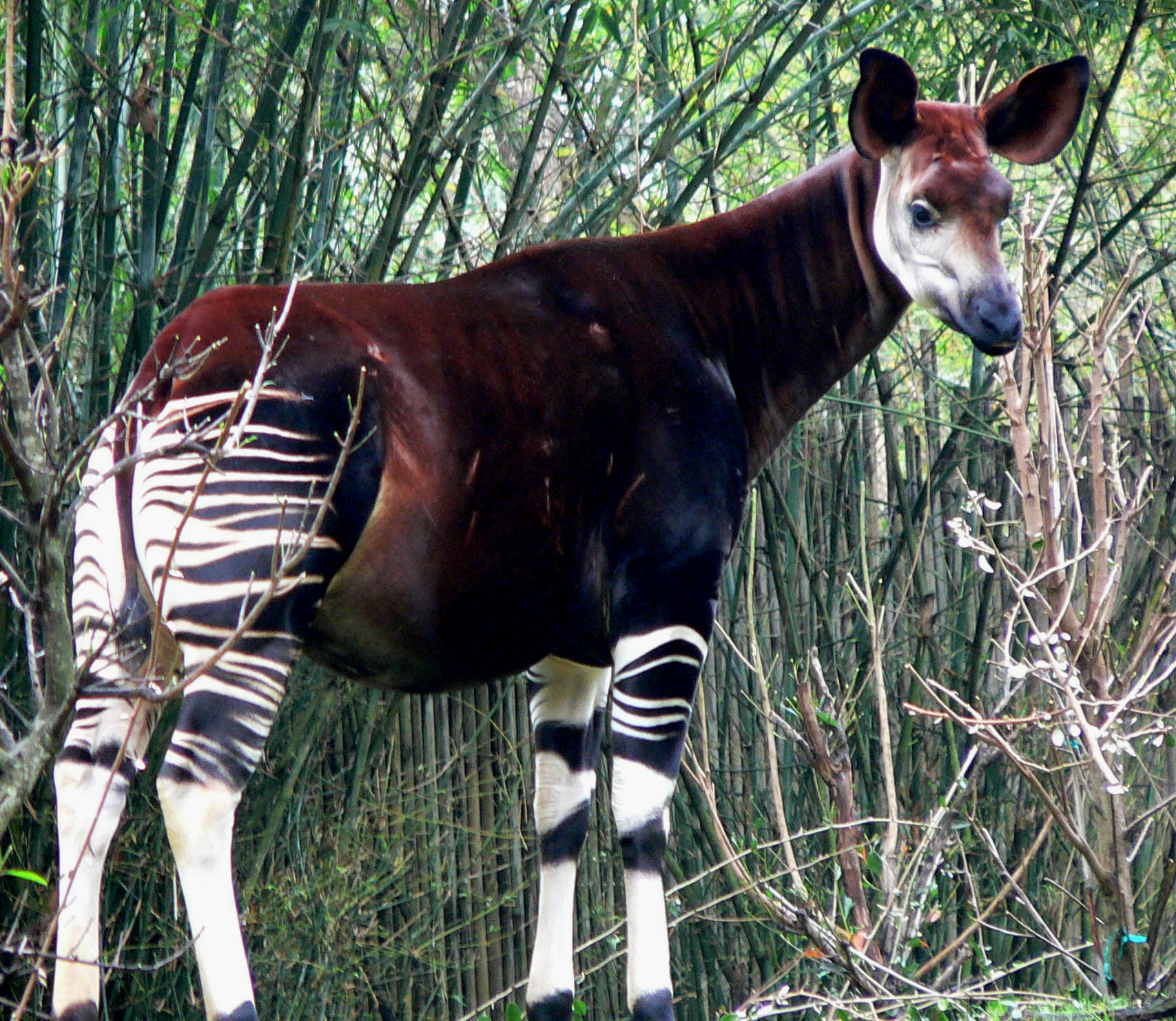Okapis are among the most elusive animals in the world. Apart from the 100 you can find in Zoos across the globe, you’ll rarely ever see an Okapi in the wild.
What’s left of these secretive creatures can only be found in the Ituri Rainforest, located in the Democratic Republic of Congo in Central Africa.
But their ability to escape the spotlight is what makes them one of the most fascinating animals in the world.
So, join us as we take you through 11 interesting facts about these mysterious creatures.
Okapi Key Highlights
- The Okapi’s physical characteristics complement its rainforest habitat, including its long, prehensile tongue that can wrap around branches and its oily fur that act as a waterproof barrier against rain.
- The Okapis have maintained their reputation by being solitary creatures that only come together for the mating season and communicate through their secret language that cannot be understood by their predators.
General Info About Okapi
| Habitat: | Rainforests |
| Location: | Northern, eastern, and western rainforests in the Democratic Republic of Congo |
| Lifespan: | Wild: 20 years, Captivity: 30 years |
| Weight: | 440 to 550 lbs |
| Diet: | Leaves, buds, grass, ferns, fungi and fruits |
| Predators: | Leopards, servals and golden cats |
| Size: | 7.2 – 8.2 ft (2.2 – 2.5m) |
| Top Speed: | 37 mph (60 km/h) |
Learn more by reading our ultimate profile of the Okapi profile
Top 11 Facts About Okapi
1. Okapis Were Largely Unknown Until Relatively Recently

Okapis are such masters at hiding that they weren’t properly discovered till the late 1880s. Sure, the people native to the areas around Ituri had known of the animal for a few generations, but it was still largely unknown to the rest of the world.
In fact, it was in 1901, when British explorer Harry Johnston came across the skull and skin of an Okapi, that the species gained global recognition. Before then, there were only rumors about “Unicorns” living in Central Africa circulating among Europeans.
2. They Belong to The Giraffe Family
If you were ever to see an Okapi in the wild you may think that the animal is a cross between a Zebra and a Donkey.
But these majestic creatures are actually the only living relatives of Giraffes left in this world. The resemblance is actually uncanny once you take a look at the Okapi’s head.
3. Their Stripes Serve Multiple Purposes
Both the Okapi’s hind legs and front legs are covered in stripes, just like a Zebra’s. It helps them blend into their rainforest habitat and makes the animal difficult to spot..
It’s also believed that these stripes act as a beacon for young Okapi when they’re trying to follow their mother through dense vegetation. Also, like Zebras, all Okapis sport unique stripe patterns, which helps them recognize one another.
4. The Okapi’s Fur is Strangely Velvety and Oily
Almost the entire body of an Okapi is covered with reddish-brown to dark-purple fur that has a strange velvety texture to it. Their dense coat can also feel oily at times.
Scientists believe an Okapi can secrete oil from its skin into its fur as a defense mechanism against the rain.
5. They Can Clean Their Eyes and Ears With Their Tongue
Okapis are blessed with enormous tongues that can grow up to 14 inches long. They put their long, prehensile tongue to great use as well, using it to clean both their eyelids and ears. Funnily enough, an Okapi can even use its tongue to swat away insects from its head and face.
6. Okapis May Eat Bat Excrement From Time to Time
Okapis can eat 45 to 60 pounds of food a day. Being herbivores, their diet mainly consists of leaves, fruits, ferns, grasses, and fungi. These beasts are partial to a bit of bat excrement from time to time.
7. They Speak A Secret Language
Okapis, like their relatives, the Giraffes, have cultivated a reputation of being extraordinarily quiet. But what we deem as being quiet is actually them conversing in sounds that are of such a low frequency that they’re beyond the scope of human hearing.
Researchers have distinguished coughs, bleats, and whistles as the major sounds they make to communicate with each other.
8. Okapis Were Rumored to Be Unicorns Before They Were Discovered
Can you believe it? Unicorns do exist! At least, that was the rumor going around the European subcontinent until these “African Unicorns” were discovered to be Okapis.
Still, we can understand why the comparison was made, especially since the males have small horns growing from just about the center of their heads, slightly above their eyelids.
9. Okapis Have Been Listed as Endangered

Due to their overall secretive nature, it’s been challenging to gather population data for the entire species. Experts believe there are about 10,000 to 30,000 Okapis left in the wild.
That said, considering that they are bound to a very small habitat and are in constant threat from human poachers, the IUCN has labeled them as an endangered species.
10. They Have an Extremely Long Gestation Period
Female Okapis can stay pregnant for 400 to 450 days. After a gestation period that lasts for more than a year, the female Okapi gives birth to one calf.
This also explains why female Okapi’s are sedentary for most of the day while their male counterparts are always on the move.
11. An Okapi Calf Learns to Walk Just 30 Minutes After Its Birth
Speaking of Okapi calves, did you know they learn to walk just 30 minutes after their birth? Not only that, but they can even learn to walk and run within that time.
Strangely enough, however, an Okapi calf doesn’t learn to defecate until it’s one month old. Which actually works out in its favor, as the smell of feces can actually attract predators.
Learn more by reading our ultimate profile of the Okapi profile

